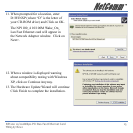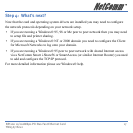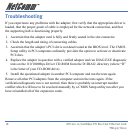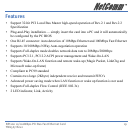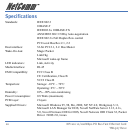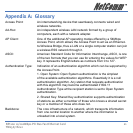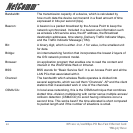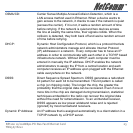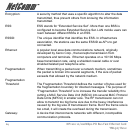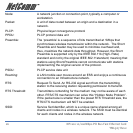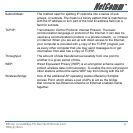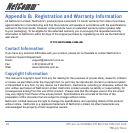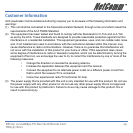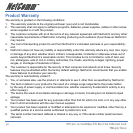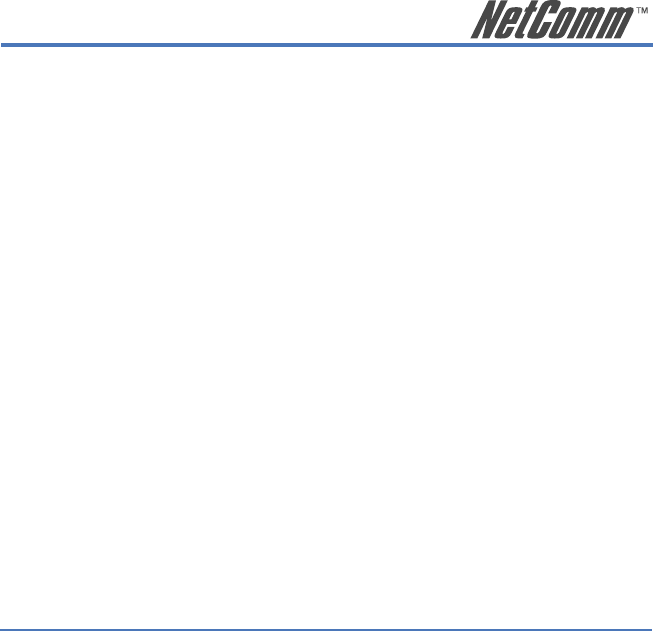
NP1100 10/100Mbps PCI Bus Fast Ethernet Card 23
YML567 Rev2
CSMA/CD: Carrier Sense Multiple Access/Collision Detection, which is a
LAN access method used in Ethernet. When a device wants to
gain access to the network, it checks to see if the network is quiet
(senses the carrier). If it is not, it waits a random amount of time
before retrying. If the network is quiet and two devices access
the line at exactly the same time, their signals collide. When the
collision is detected, they both back off and wait a random amount
of time before retrying.
DHCP: Dynamic Host Configuration Protocol, which is a protocol that lets
network administrators manage and allocate Internet Protocol
(IP) addresses in a network. Every computer has to have an IP
address in order to communicate with each other in a TCP/IP based
infrastructure network. Without DHCP, each computer must be
entered in manually the IP address. DHCP enables the network
administrators to assign the IP from a central location and each
computer receives an IP address upon plugged with the Ethernet
cable everywhere on the network.
DSSS: Direct Sequence Spread Spectrum. DSSS generates a redundant
bit pattern for each bit to be transmitted. This bit pattern is called
a chip (or chipping code). The longer the chip, the greater the
probability that the original data can be recovered. Even if one or
more bits in the chip are damaged during transmission, statistical
techniques embedded in the radio can recover the original data
without the need for retransmission. To an unintended receiver,
DSSS appears as low power wideband noise and is rejected
(ignored) by most narrowband receivers.
Dynamic IP Address: An IP address that is assigned automatically to a client station in a
TCP/IP network by a DHCP server.



